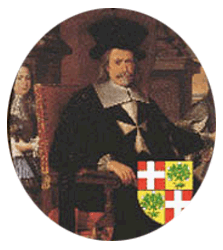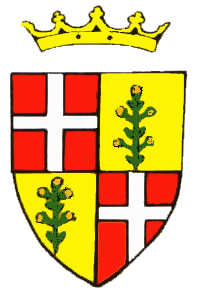



1663-1680
Nicholas Cotoner, Bailiff of Majorca, was by unanimous consent raised to the vacant dignity on his brother's death on the 23rd October 1663. Only once before in the history of the Order do we find two brothers appointed in succession as Grand Master. This was the case of the two Villarets, who followed each other as Grand Masters during the sway of the Order in Rhodes.
The many noble qualities of the deservedly popular brothers Cotoner fully justified their election to the great position of trust which they had been called upon to occupy.
Naval expeditions similar in character to those attempted under preceding Grand Masters marked the reign of Nicholas Cotoner by a series of victories in which the names of Tremincourt, Creinville, and Hocquincourt had earned undying fame. The glorious death of Tremincourt added still further to the brilliant reputation, which he had enjoyed during his lifetime. Shipwrecked on the coasts of Barbary, he was captured by the Infidels and conveyed to Adrianople, there to bear the brunt of the Sultan's wrath. Mahomet IV. was the Chief of the Ottoman Empire at the time, and many were the alluring offers which he made to tempt the valiant Tremincourt to abjure the religion of his fathers and enter the Turkish service. Exasperated by the reiterated and obstinate refusals of the young Knight, the Sultan ordered his head to be cut off and his body flung into the sea.
The siege of Candia, which had lasted for twenty-five years, and in which the Knights of Malta bore so great and heroic a part, was brought to a close in 1670, and the Turkish flag waved triumphantly over -the ramparts of Crete. Nicholas Cotoner, fearful lest the Turks flushed with victory, would next turn their attention to Malta. In order to avenge themselves for the ready support that the Order had accorded to the Venetians throughout the memorable siege, at once took steps to further ensure the security of the island. To this end he caned in Count Valperga, a most talented Italian engineer in the service of the Duke of Savoy. Under the direction of this engineer the stupendous fortifications known as " the Cottonera Lines " were constructed. The Grand Master laying the first stone in the bastion of St. Nicholas on the 28th August 1670, with the same pomp and ceremony as had been used by La Vallette at the dedication of the City of Valletta in 1566.
The works at Cottonera were carried on with great vigour for a period of ten years, at the end of which time, however, they were unfortunately stopped owing to lack of resources. This great work was then neglected for some thirty years and was eventually completed in 1716 by Grand Master Roccaful. Several important additions were made to the existing fortifications of Floriana. Under the superintendence of the eminent Valperga, a new fort was erected at the entrance of the grand harbour, which is still known as Fort Ricasoli, after a Florentine Knight of that name who had contributed 30,000 Maltese scudi towards its construction.
While the Order was preparing to send strong reinforcements to share the brilliant successes of the heroic John Sobieskip King of Poland, against the Turks, the plague broke out in Malta, and the Grand Master took all necessary precautions for the protection of the inhabitants. A lazaretto was established in the Marsamuscetto harbour, and the strictest regulations were enforced in order to stamp out the disease, from which 113,000 persons are reputed to have perished at this time.
After successfully governing the Order for sixteen years, Nicholas Cotoner died on the 29th April 1680 at the age of seventy-five, to the great grief of the fraternity and of the Maltese people, to whom he had endeared himself by his wise administration.